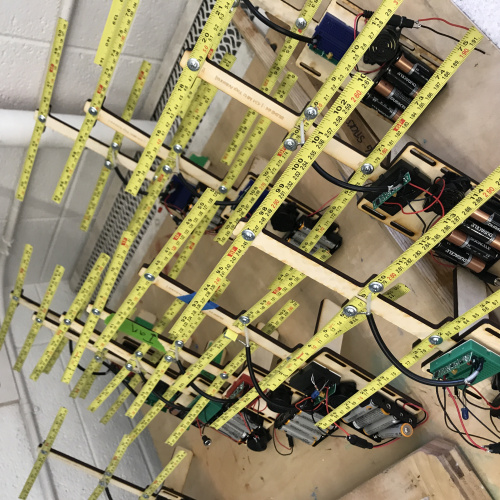In a recent camp that I did with the amazing BLDG61 Makerspace at the Boulder Public Library, we explored some experimental concepts with Arduino and low-cost radio frequency transmitter and receiver pairs.
Getting kids from blink to radio transmission to radio direction-finding is a big task. We managed to find some online resources and cobble together a system that took students from blink to radio direction-finding in an afternoon. Let's explore that in this post.

Blinking an LED is where everyone starts in Arduino and it's a great place to start. What do we do beyond that? Usually I move to decreasing the delay time of the blink into an audible tone. At 10 milliseconds on and 10 milliseconds off, we create an audible tone at about 50 hertz. Not exactly in the western scales, but an audible tone nonetheless.
This is a great starting point for the tone command in Arduino - my most frequently picked note is 440 Hertz, or concert A. Below is some code that uses concert A as a blink-like example. We send the concert A tone through a radio transmitter, conveniently sold by SparkFun. When we pair that with a simple receiver and battery pack coupled to a speaker, we have an audio radio direction-finding unit that can be attached to a Yagi antenna. Yagis are a source of much radio frequency voodoo, but in essence, they are directional antennae that broadcast and receive in a line of sight.
We built our antennas out of laser-cut plywood and old tape measures, a low-cost and super fun classroom project. The files can be found here: (file download).
Next we followed some pretty simple wiring examples, the details are under craftninja’s github.

The code for this is really simple!
void setup(){
pinMode(9, OUTPUT);
}
void loop(){
tone(9,440);
delay(1000);
noTone(9);
delay(1000);
Next, you can build a simple receiver that doesn't even need an Arduino.

From here, hide your Arduino and send a team searching. The simple act of intersecting two lines of strongest signal should give you a location of the "fox".
Have fun with this and let us know how it works for you!


Arduino, student projects